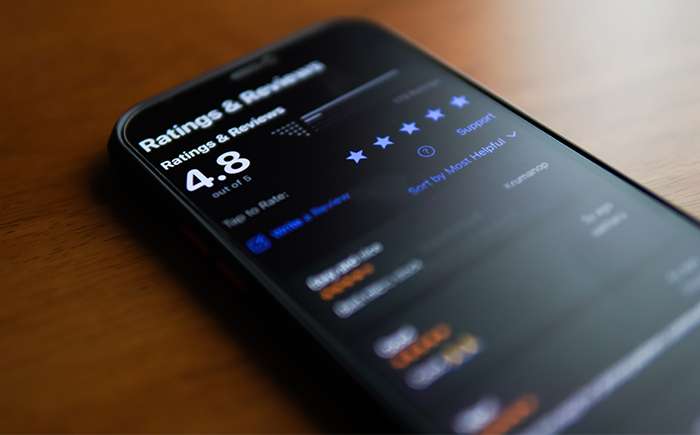- Blog
- Build CX momentum in your business
Build CX momentum in your business

In this blog, we explore what customer experience is, why it is important and the tips to create an effective strategy to generate a positive CX momentum in your business.
What is customer experience in business?
HubSpot defines customer experience as:
The impression your customers have of your brand as a whole throughout all aspects of the buyer's journey. It results in their view of your brand and impacts factors related to your bottom line including revenue.
In business, this comes down to any and all interactions that your target customer has with your brand. From what they hear from friends, the news or scrolling social media, through to their experience on your website, customer service platforms and purchasing outlets. Anywhere your brand ‘pops up’ in their life is a part of their overall customer experience.
Just one poor experience could spell the end for your brand’s reputation in the eyes of your customers. And this can have a detrimental long-term effect if these experiences are not identified and rectified. If one person can have a bad experience, what are the chances that, left unattended, another won’t?
Customer experience is a universal concept for businesses across all industries.
- Automotive: has a unique need for managing complex, sensitive and high-value processes which can include vehicle buy-backs and vehicle recalls which are highly scrutinised by the ACCC. To combat this, the automotive industry needs customer experience journeys that create and maintain strong relationships, and lead to brand loyalty and customer advocacy.
- Banking and Finance: includes accounting firms and financial services providers through to neobanks, FinTech companies, credit unions and big bank organisations. They require customer service strategies that maximise efficiency and flexibility in an ever-changing financial landscape.
- Government: local, state and federal government departments often have a variety of services they offer with varying degrees of CX requirements. Most of the time, their customer experience tactics need to be nimble and adaptable to change.
- Healthcare and Insurance: it’s all about empathetic customer service and so CX here needs to reflect that sensitivity in how brands market themselves.
- Retail and eCommerce: from emerging eCommerce retailers through to established brick and mortar stores, customer experience is highly competitive and often requires significant investment to maintain brand loyalty.
- Superannuation: customers here are looking for funds that help ensure the path to retirement and beyond is a smooth one. Their CX is shaped around smarter processes, improved technology and first-rate customer service.
- Telecommunications: these telco brands need to provide omnichannel customer service that sets a new benchmark in the industry, taking into consideration technical support as a huge CX factor.
- Transport and Logistics: these companies manage millions of client and end-user interactions per annum and require differentiated customer service management and experience that delivers reduced cost-to-serve strategies.
- Travel: due to the 24/7 nature of this industry, responsive customer service with round-the-clock capabilities is a must for successful CX strategies.
- Utilities: from managing connections and disconnections through to billing and debt collection, customer experience strategies that meet the needs of all types of customers and improve overall organisational efficiency are ideal.
How do you measure customer experience?
There is a lot more to measuring customer experience than just sending out a one-question survey to your existing clients. This is because the customer experience incorporates any and all touchpoints a person may have with your brand.
The five more popular metrics for measuring CX are:
- Customer satisfaction (CSAT) scores: more traditional way of capturing CX statistics such as survey questions asking about satisfaction or specific metrics. This could include a prompt at the end of their purchase experience, either online at checkout or in-person with an iPad placed in-store, asking the customer to rate their shopping satisfaction on a scale of 1 to 5, with one being ‘poor’ and 5 being ‘great’. Other CSAT metrics include product review ratings, mystery shopping feedback and the timeliness of delivery statistics.
- Customer retention or loyalty metrics: measuring how often a customer purchases, what channels they use, loyalty program signups and use, average order amounts, any repeat orders and return rates.
- Brand advocacy rates: Net Promoter Score (NPS) surveys are great for this, asking customers ‘how likely they are to recommend your product or service to others on a scale of 0-10’. Other areas to measure your reputation includes price sensitivity analysis, social media ranking compared to competitors and even event participation rates.
- Quality of operations: looking more closely at your returns or complaints can give you a greater insight into the quality of your customer experience. What happens when a product or service doesn’t meet your customer’s expectations? If that process generates a poor CX, it’s hard to fix the ‘bad taste’ left in your customers' mouths.
- Employee engagement: a major factor in delivering effective customer experience comes down to your employees' own experience with your business. In fact, 86% of businesses rank employee engagement as having an equal or greater impact than other CX hurdles.
Once each of these metrics results is gathered, collated, organised and analysed, it’s time to consolidate them. Understanding how each of them fits on the customer journey and where the trigger points are that influence these metrics most will help paint a picture of where to start improving your overall customer experience. Even just starting with one area of opportunity can improve your CX down the track.
How important is customer experience?
The proof is in the pudding: customers who have a positive CX are 54% more likely to make another purchase. Another purchase leads to greater profits and returns. Greater profits and returns lead to business scalability, growth and cost savings. Take this security company that, through the implementation of CX solutions such as robotic process automation (RPA), had an 80% reduction in bad debt write-offs equivalent to $100k - $150k per year and experienced manual labour savings of up to $80,000 annually.
What makes a good customer experience?
Good customer experience examples include quick responses, actively acting on customer feedback, maintaining self-service options for customers, providing omnichannel support, implementing effective chat bots.
What makes a bad customer experience?
Bad customer experience examples include not meeting consumer expectations, taking too long to get back to a query, not offering compensation for issues with delivery, interrupting customers, not supporting social causes that are industry-relevant and mismanaging social media.
How to create a customer experience strategy
If you want to enhance your customer experience strategy here are a few pointers to help you get started:
- Be proactive: the ability to develop and deliver additional services is crucial for businesses wanting to improve customer experience. Instead of a reactive approach to customer service, try to anticipate your customer needs before they ask. Taking a look at customer behaviour trends is a great way to start.
- Communication is key: being across a customer’s needs and wants is crucial and that stems from not only asking the right questions but doing so regularly. Take time to analyse customer feedback and let them know you are actively working on areas of opportunity. Make them feel heard. There is nothing worse than offering up your advice and not feeling acknowledged.
- Keep up with technology trends: from digital transformation trends through to the implementation of a successful digital transformation roadmap, where does your business sit on the adoption of technology into your customer experience strategies. Think about tech concepts like the cloud, data collection, chatbots, virtual reality, voice technology, personalisation and automation.
Curating exceptional customer experiences by doing it better
There are a range of CX solutions that combine the expertise of people with the power of cutting-edge technology; the right CX partner can help you navigate the complex digital world that is enveloping modern business and foster digital enablement.

%20tech-%20a%20banking%20and%20finance%20gamechanger-3.jpg)
